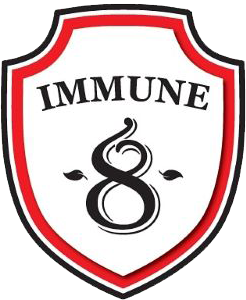August 9, 2022
Margie Vance
Blog
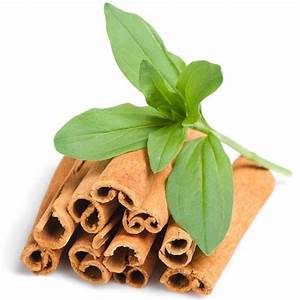
CINNAMON LEAF Essential Oil
Family: Lauraceae
Tree, 250 different species (Rao & Hua n, 2014)
Cinnamomum Zeylanicum- Ceylon cinnamon (true cinnamon) inner bark- lighter, smoother, and sweeter, less coumarin.
Cinnamomum Osmophloeum-leaf produces eugenol 70 to 95%
Cinnamomum Verum-bark produces cinnamaldehyde
Cinnamomum Camphor-root produces camphor
Cinnamomum Aromaticum/cassia/Chinese cinnamon, inner bark but strong coumarin
Safety data on Cinnamon Leaf oil states non-toxic, non-irritant, and non-sensitizing. However, different compounds from various parts of this plant can be toxic.
Historical use of cinnamon was a “symbol of independence and was a respected gift to Gods and monarchs”. Cinnamon was known to “treat malaria, diabetes, menopausal problems, headache, bad breath, digestive disorders, anemia, sinus congestion, blood circulation, scabies, intestinal infection, and GYN problems” (ayurvedicoils.com).
Cinnamon Tree for Leaf oil is mostly grown in parts of Asia, native to South Asia.
Each oil consists of many active constituents (chemical makeup) that are unique to just that plant, tree, or shrub. The chemical substances or compounds that make essential oils effective can come from these families: terpenes, aldehydes, alcohols, esters, phenolic, ethers, and ketones making them anti-microbial agents (Swamy et al., 2016). Various parts of that plant (stem, leaves, bark, resin, flowers) are used in making oil and can contain different active constituents designed by nature for protection and growth. The location in the world where the plant is grown affects its therapeutic nature as well. The mixture of the chemistry of the plant gives it the aroma. There are several ways to extract the oil. Stream distillation is known as the best method without harming active ingredients.
The cinnamon leaf produces the highest active compounds at 2 years of age. The major compound is eugenol which is rapidly absorbed in the body. Remarkable antioxidant and prevents peroxynitrite-induced lipidic peroxidation. Eugenol has anti-inflammatory properties by acting on human platelet aggregation, suppressing arachidonic acid (AA), and inhibiting the metabolism of AA.
On the other hand, Cinnamon Bark contains trans-cinnamaldehyde at 87.22% and showed anti-inflammatory, anti-diabetic, anti-microbial, wound-healing, anti-cancer, lipid-lowering, and cardiovascular protection. Research also showed benefits for neurological disorders such as Parkinson’s and Alzheimer’s diseases. Beneficial effects can be seen for anxiety and depressive disorders (Sohrabi et al, 2017; Roa & Gan, 2014). Cassia oil contains higher coumarin and can be toxic to the liver and kidneys cited in Nutrioon.com and Ranasinghe et al. (2012). Ceylon has lower amounts of coumarin.
Active chemistry constituents of Cinnamon Leaf are eugenol 70-95% and small amounts of cinnamaldehyde.
The reason for alternative ways to fight bacteria and infections was seen in the 1990s when hospital infections ranged from staphylococcus aureus, E-coli, and pseudomonas aeruginosa costing $4.5 billion. Resistance to antibiotics was seen in developing MRSA cases (Teles et al., 2019).
In conducting a systematic review of CZ in many databases registering scientific research, Ranasinghe and colleagues (2013) found in-vitro and in-vivo evidence of CZ properties of anti-microbial, anti-parasitic, antioxidant, and free radical scavenging.
Below are evidential research findings on Cinnamon Leaf oil as anti-viral, anti-fungal, anti-bacterial, anti-cancer, anti-inflammatory and other factors.
Anti-fungal Effects of Cinnamon Leaf
Study measuring effects of cinnamon Z flower and leaves against candida which can spread throughout the body of immuno-suppressive individuals. Certain microorganisms can create biofilms that make it resistant to drugs. The Blume properties are analgesic, antiseptic, anticancer, antispasmodic, coagulant, neuroprotective, hepatoprotective, gastroprotective, cardioprotective, and antimicrobial potentials. The researchers found Cinnamon Blume interfered with the candida growth in all tested concentrates and the fungus was completed eliminated after 24-hour exposure (Rangel et al., 2018).
Cinnamaldehyde has been effective against some strains of Aspergillus and A.flavus fungus. Derivatives, such as α-methyl cinnamaldehyde has shown strong activity against 38 strains of Candida (Catala’ & Ferrer, 2017).
Anti-bacterial Effects of Cinnamon Leaf
The leaves and branches of the CZ were used against a dangerous bacteria affecting honeybee brood known as American Foulbrood. A study conducted by Gende et al. (2008) showed CZ essential oil to inhibit three strains of P. larvae from three different geographical areas.
Cinnamaldehyde is highly effective against gram-positive bacteria and disturbs the gram-negative bacteria cell membrane wall to let antibiotics in. Furthermore, inhibits the growth of S. aureus, Bacillus cereus, and E-coli (Catala’ & Ferrer, 2017).
Other Cinnamon Leaf oil articles
Ranasinghe et al. (2013) systematic review of 70 articles on CZ found anti-microbial and anti-parasitic activity. Other benefits are lowering blood glucose, blood pressure, and serum cholesterol, hepato-protection, inhibition of filament formation in Alzheimer’s disease, and wound healing.
The reason “why” I added Cinnamon Leaf in my blend was because of its anti-microbial (ability to destroy viruses, bacteria, and fungi), anti-septic, and anti-depressant properties.
To Your Health & Happiness
Dr. Margie
April 12, 2021
Margie Vance
Blog
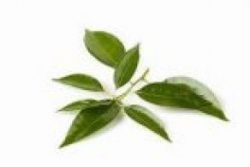
White Camphor Essential Oil
Cinnamomum camphora
Family: Lauraceae plant or camphor tree is native to Asia, China, Taiwan, and Japan. The trees are abundantly grown in India and Sri Lanka, and also can be found in Florida.
The reason “why” I added White camphor into my blend was because of its ability to destroy bacteria, and fungi. It has antiseptic and anti-inflammatory properties, as well.
Safety data on White camphor oil stated non-toxic, non-irritant, and non-sensitizing from the Essential Oils Aromatherapy encyclopedia when used accordingly. It is the yellow, brown, and blue camphor that can be very toxic.
Camphor is a terpenoid, waxy white color. At room temperature has a strong aromatic odor. Melts at 170 °Celsius or 338 °Fahrenheit. Insoluble in water but soluble in alcohol. Chemical formula C10H16O. (Molecules, Chen et al., 2015, vol 18, 5434-5454)
Eighty percent of the people in developing countries use traditional medicines such as essential oils for primary care (Singh & Jawaid, Pharmacognosy Journal, vol 4(28), 2012). Used as a fumigant in the Black Death.
Each oil consists of many active constituents. This is the chemical makeup, close to 200 compounds that are unique to just that plant, tree, or shrub. Various parts of that plant (stem, leaves, bark, resin, flowers) are used in making oil and can contain different active constituents designed by nature for protection and growth. The location in the world where the plant is grown affects its therapeutic nature as well. The mixture of the chemistry of the plant gives it the aroma. Like a rose is a rose. There are several ways to extract the oil but mostly the oil is produced by steam distillation. up to 260 F., This is known as the best method without harming active ingredients.
White camphor oil comes from the wood and bark of this evergreen. The leaves and twigs are being used more today and yield different compounds containing linalool. Important compounds found in Camphor are camphor, linalool, camphene, dipentgene, terpineol, safrole, and cineole. Some trees can grow to be 1000 years old. The tree will be at least 50 years old before harvest and can grow to 100 feet. White camphor oil is a terpene commonly used in lotions and creams. According to Plant Therapy, White Camphor oil is good up to 113 F.
The top four main constituents are 1.8 cineole, limonene, alpha-pinene, and sabinene.
- 8 Cineola is a bronchodilator, antiviral, anti-inflammatory, relieves coughs, and reduces mucus. (35.9% in pure oil)
- Limonene is known to prevent or slow down cancer growth (12.6 % in pure oil)
- Alpha-pinene helps with cognition (thought process), is anti-inflammatory, and bronchodilator (12.3% in pure oil)
- Sabinene is invigorating, anti-inflammatory, anti-microbial, and antiseptic. (11.4% in pure oil)
List of the many benefits of White Camphor
- Insect repellent – Repels insects naturally
- Decongestant– Eases blocked chest
- Antispasmodic– Relieves muscle spasms
- Anesthetic– Pain reliever and helps treat numbness
- Anti-inflammatory– Fights pain, swelling, redness, pain, high temperature
- Sedative– Relaxes and helps you sleep
- Antiseptic– Prevents infections
- Antipruritic– Prevents the formation of pus
- Rubefacient– Helps you relieve pain by dilating your blood vessels
- Contraceptive– Prevents pregnancy
- Expectorant– Helps you to spit out sputum
- Nasal decongestant– Helps relieve congestion or blocked nose
- Cough suppressant– Prevents cough
- Antirheumatic– Prevents rheumatism
- Anticancer– Fights cancer
- Antimutagenic– Prevents the cancer cells from spreading
- Insecticidal– Kills harmful insects
- Antimicrobial– Fights harmful organisms such as bacteria
- Antifungal– Effective against fungi
More added benefits are:
- Cooling and penetrating scent
- Nullifies apathy (lack of interest)
- Eases skin diseases
- Fights fungal infections
- Relieves muscle stiffness or cramps
- Soothes your nerves
White Camphor oil research articles
- Anti-viral research with camphor compound camphecene showed anti-hemagglutinin (natural antibody) activity against influenza viruses A and B with low cytotoxicity. The influenza virus has high resistance to medicines. (Science Direct, Antiviral Research Journal, Zarubaev, et al., 2015, vol 120,126-133).
- Many essential oils can regulate the quorum sensing (QS) system of pathogens and inhibit viral expression. QS is a communication system in bacteria that help them to reproduce and secrete certain molecules. Bacteria replicate fast and have acquired resistance to medicines. Chromobacterium violaceus (C. violaceium) bacteria are found in soil and water in tropical and subtropical regions all over the world. The compounds of camphor were found to decrease the production and biofilm of this bacteria, as well as downregulate the QS system. (Molecules Journal, Wand, et al., 2019, 24, 3792)
- Chemical insecticides are harmful to humans as well as upset the eco-balance, pollution, and development of resistance. Camphor compounds were found to kill the larvae of mosquitos that cause malaria. (Journal of Brazilian Society of Tropical Medicine, Xu et al., 2019, Vol 53, e20190211).
- Cephalopinatitillator (c. titillator) is a common worldwide nasal bot fly larval infestation of camels, which belongs to the family Oestridae. Nasopharyngeal myiasis is an important high-incidence disease among camels in the Middle East and North Africa that results in severe economic losses in many camel breeding areas around the world. Cinnamon, ginger, and camphor essential oils were tested against botflies and infections. Camphor showed the highest rate of insecticide in killing larvae. (Journal of Parasitic Diseases, Abu El Ezz et al., 2018, vol 42(2), p. 196-203).
- Blowfly population control is important in the infestation of sheep known as the common green bottle fly that devours carcasses. Camphor and lavender essential oils were tested and Lavender was found more effective as a larvicide. (Journal of Parasite Diseases, Shalaby et al., 2016, vol 44(4), 1475-1482)
- The red fire ant, Solenopsis Invicta Buren, causes severe damage to humans and animals. Camphor oil was proven effective against red fire ant workers in fumigation and repellence. (Journal of Insect Science, Fu et al., 2015, vol 15, p.1-6)
Ayurvedic tradition states white camphor increases prana (universal energy [breath]), opens senses, brings clarity, and awakens perception. Used for thousands of years for bronchitis, insomnia, asthma, whooping cough, epilepsy, sinus headaches, and nasal, and pulmonary congestion. Used in sacred ceremonies in India, Indian prayers, and Hindu celebrations, Egyptians, Greeks, and Romans for incense, flavoring, and embalming, and also used for the plague in Iran and Persia.
To Your Health & Happiness,
Dr. Margie
Immune8.com
October 20, 2020
Margie Vance
Blog
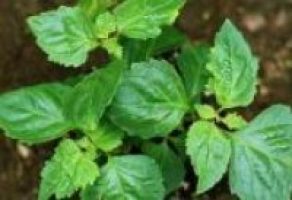
PATCHOULI Essential Oil
Pogostemon Cablin
Family: Lauraceae -a perennial bushy herb with hairy leaves and stems with white flowers and a hint of purple/or pink. Many grow up to three feet tall.
Patchouli is a thick, misty aroma oil. It is a grounding oil and is known to help improve the appearance of the skin. Patchouli oil works as an anti-depressant and helps to balance hormones. This oil can ease tension, relax the body, and is known as an aphrodisiac.
Found in Asia, Indonesia, Philippines, India, China, Malaysia, and South America. Distilled from dry leaves in Europe and USA.
Traditionally Patchouli is known for its scent in clothing and believed to prevent the spread of disease. China, Japan, and Malaysia use patchouli for colds, nausea, headaches, vomiting, diarrhea, and stomach pain. Japan and Malaysia have used this herb for poisonous snakebites (Lawless, 1995).
Safety data on Patchouli oil states non-toxic, non-irritant, and non-sensitizing. According to the Plant Therapy website, Patchouli can handle temperatures up to 212 F. Keeping in mind that steam distillation ranges 240-260 F.
Each oil consists of many active constituents (chemical makeup), I like to call them properties, that are unique to just that plant, tree, or shrub. Just like your DNA sequence is unique to you. Various parts of that plant (stem, leaves, bark, resin, flowers) are used in making the oil designed by nature for protection and growth. The location in the world where the plant is grown affects its therapeutic nature as well. The mixture of the chemistry of the plant gives it the aroma. There are several ways to extract the oil but mostly the oil is produced by steam distillation. This is known as the best method without harming active ingredients.
Virus and Germ fighting constituents
Patchouli oil contains 40% alcohol by nature. These alcohol constituents are pogostol, bulnesol, nor patchoulenol, bulnese, patchoulene, and others. This alcohol kills viruses and bacteria. It also inhibits oxidation. Alpha-bulbesene which is measured at 19% in patchouli oil fights viruses and inhibits platelets from grouping. Alpha-guaiene fights inflammation by measuring 15% in pure organic patchouli oil.
Below are evidential research findings on Patchouli oil, specifically patchouli alcohol (PA). A literature review of scientific studies listed the biological activities that patchouli oil has shown capable of producing such as immunomodulatory, antitumor, antioxidative, anti-microbial, anti-inflammatory, insecticidal, and other factors. Clinical applications of Patchouli oil are being considered (Hu et al., 2017). doi:10.1155/2017/4850612 https://pubmed.ncbi.nlm.nih.gov/28421121/
If you wish to read the complete article, copy the DOI number or link into the address search bar.
Anti-viral effects of Patchouli Oil
- Patchouli alcohol (PA) significantly inhibited the Influenza A virus in vitro and through Vivo analysis (Yu et al., 2019). Intra-nasal administration improved rats’ survival and decreased pneumonia symptoms. The assay tests showed inhibition of different virus strains and may block infection by inactivating virus particles and interfering with the initial stages of absorption. doi:10.1186/s12985-019-1266-x https://pubmed.ncbi.nlm.nih.gov/31870450/
- Diseases are carried by mosquitoes to animals and humans such as dengue fever, yellow fever, West Nile fever, Rift Valley fever, and Japanese encephalitis. Patchouli oil was used with silver nanoparticles to create eco-friendly pest control for mosquitos. This biopesticide was able to affect the larvae and pupae of the dengue and zika virus carried by the Aedes Albopictus mosquitos (Ga’al et al., 2018). doi:10.1080/21691401.2017.1365723 https://pubmed.ncbi.nlm.nih.gov/28859534/
Immune System Effects of Patchouli Oil
- Patchouli oil alcohol, tricyclic sesquiterpene, was isolated and purified to evaluate its effect on the modulation of the immune system in Kunming mice through macrophages phagocytosis, immune organ index, serum immunoglobulin level, and delayed-type hypersensitivity. The purity of patchouli alcohol was 99.3% and administered at 40 or 80mg/kg body weight. The treatment significantly decreased the delayed hypersensitivity. The results showed that Patchouli alcohol has immune system modulating properties by initiating a mononuclear phagocytic system, boosting humoral immune response while suppressing cellular immune response (Liao et al., 2013). DOI: 10.4314/tjpr.v12i4.18 https://www.ajol.info/index.php/tjpr/article/view/93275
- A Patchouli oil study was conducted to analyze the effects in vitro and vivo of leukocytes’ behavior in the acute inflammatory response. The application of a high concentration of patchouli oil was able to affect leukocytes’ behavior that involved nitric oxide production and pro-inflammatory cytokines (Silva-Filho et al., 2016). DOI: 10.1016/j.biopha.2016.10.084 https://www.sciencedirect.com/science/article/abs/pii/S0753332216310605
Anti-bacterial Effects of Patchouli Oil Alcohol
- A medical biofilm made with patchouli oil was investigated by Radulescu et al. (2016). The bioactive coating is designed to kill microbials in wound infections and may be used in other soft materials for resistance to microbial colonization. doi:10.3390/met6050103 ttps://www.researchgate.net/publication/301799004_Antimicrobial_Nanostructured_Bioactive_Coating_Based_on_Fe3O4_and_Patchouli_Oil_for_Wound_Dressing
- Patchouli alcohol, tricyclic sesquiterpene, was evaluated in vitro and Vivo to kill the bacteria Helicobacter pylori usually found in the stomach. The amount of time and concentration of patchouli alcohol was determined by the kill rate. The bacteria’s adhesiveness, mobility, and inner structure were suppressed by patchouli alcohol. Patchouli alcohol was also successful at eliminating H pylori and gastritis while suppressing inflammatory mediators making it an immense potential for new drug growth (Xu et al., 2017). http://aac.asm.org
- Patchouli oil antimicrobial constituents were assessed with docking technology and in vivo against five bacterial enzymes and five antibiotics as target molecules. Patchouli oil had 26 compounds that showed antibacterial activity. The two compounds of patchouli oil that were dominant were (-)-patchouli and pogostone alcohol which showed strong antibacterial activity (Yang et al., 2013). https://pubmed.ncbi.nlm.nih.gov/24250637/
- Patchouli was found to totally inhibit e. coli. Patchouli had 47.5% carvacrol and 15.2% p-cymene. Oils from different origins have different levels of active constituents as identified by gas chromatography-mass spectrometry testing by this research group in Taiwan (Lin et al., 2016). doi:10.1016/j.jfda.2015.12.006. https://www.researchgate.net/publication/301274750_Essential_oils_from_Taiwan_Chemical_composition_and_antibacterial_activity_against_Escherichia_coli
Anti-cancer Activities of Patchouli Oil
- Kim and colleagues (2015) isolated a new chemical compound (cytosporone) from patchouli and tested it with two other known phenyl-ethanol compounds of patchouli. Although the test showed weak antibacterial activity, the two phenyl-ethanols showed significant cytotoxicity on four human tumor cells. doi:10.1016/j.bmcl.2015.04.094 https://pubmed.ncbi.nlm.nih.gov/25981688/
- Patchouli alcohol was evaluated from the Pogostemon Cablin Benth plant, and known in Chinese medicine as Guang-Hou-Xiang. China has used this plant for many years to resolve dampness, improve appetite, arrest vomiting, and dispel summer heat. The researchers found that patchouli alcohol can hold antitumor ability against human lung cancer A549 cells in vivo and vitro. Patchouli alcohol was able to activate the caspase 3 and 9 inside the mitochondria causing cell death. Patchouli alcohol can inhibit the sample graft of tumors in vivo (Lu et al., 2016). doi:10.1155/2016/4567580 https://pubmed.ncbi.nlm.nih.gov/27830146/
Anti-inflammatory effects of Patchouli Oil Alcohol
- Chen et al. (2017) investigated β-patchoulene (β-PAE), a tricyclic sesquiterpene, on its anti-inflammatory activity on lipopolysaccharide-induced acute lung injury in mice. Pretreatment of β-PAE was able to inhibit the increase of the anti-inflammatory immune markers, TNF-α, IL-6, and IL-1β. The researchers also noticed that β-PAE was able to activate antioxidant genes. doi:10.1016/j.intimp.2017.07.001 https://pubmed.ncbi.nlm.nih.gov/28711783/
- Inflammatory bowel disease (IBD) has increased in recent years. IBD is characterized by chronic relapsing intestinal inflammation. Patchouli oil was investigated for a possible therapeutic effect on TNBS-induced IBD rats. The results of this experiment showed that patchouli significantly alleviated colonic damage and decreased disease symptoms. Patchouli oil reversed the metabolic changes that are associated with TNBS-induced IBD in rats (Yu et al., 2017). doi:10.3892/etm.2017.4577 https://pubmed.ncbi.nlm.nih.gov/28810577/
Anti-stress and Liver Protection Effects of Patchouli
- Non-alcoholic fatty liver disease (NAFLD) has become the most chronic liver disorder worldwide according to Wu, et al. (2019). Patchouli alcohol was evaluated on steatosis in rats after they were fed a high-fat diet for 4 weeks. This study showed that patchouli alcohol was able to reduce cell stress and regulate low-density lipoprotein metabolism. PA also restores metabolism synthesis by increasing apolipoprotein secretion and adding the activity of microsomal triglyceride transfer proteins. doi:10.3389/fphar.2019.01134 https://pubmed.ncbi.nlm.nih.gov/31632274/
Emotional and Mental Benefits of Patchouli oil
- Patchouli alcohol (PA) has been investigated for its anti-depressant effects in chronic unpredictable mild stress. PA was able to reduce depressant-like behaviors, sucrose preferences, spontaneous exploratory capacity and reduce immobility time. PA was noticed to lessen the signaling of phosphorylation in the hippocampus. Synaptic degeneration and impaired autophagy play an important role in the progression of depression. PA was shown to inhibit autophagy, repair synapses, and restore autophagy flux in the hippocampus by activating mTOR pathways (Zhuo et al., 2020). https://pubmed.ncbi.nlm.nih.gov/32244196/
- Depressionpedia website sited that inhaling patchouli oil can help release serotonin and dopamine that can make you feel better. Patchouli oil can help with your sleep and can also increase other hormones to help with low levels of estrogen and testosterone. Smelling patchouli aroma can calm your mind and induce relaxation.
To Your Health & Happiness,
Dr. Margie
https://immune8.com/shop/

Homeopathic, Naturopathic, or Holistic, Good Question?
Homeopathic or naturopathic may seem confusing when you are looking for natural healing practitioner and medicine. This blog will try to define them with some clarity. However, holistic medicine, homeopaths, or naturopathic doctors (NDs) have basic principles in common. They acknowledge the body’s natural healing abilities and respect the patient’s role within the healing process. The patient’s intake questionnaire will usually cover extensive emotional, physical, and psychological areas.
Read More
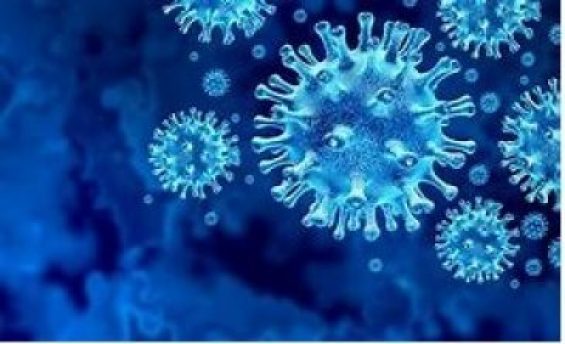
Bacteria, Superbugs, And Viruses….Oh My! What does the research say about them? What can we do for prevention? This is an extension to my blog I wrote in December 2018 https://immune8.com/blog/whats+the+difference+between+bacterial+and++virus+infections?/
The word germ is a general term used to describe bacteria, viruses, protozoa, or fungi. Germs can live anywhere from surfaces we touch, our air, our water, on plants, animals, and in us. The Mayo Clinic described these germs for us.
- Bacteria. These one-cell organisms are responsible for illnesses such as strep throat, urinary tract infections and tuberculosis.
- Viruses. Even smaller than bacteria, viruses cause a multitude of diseases ranging from the common cold to AIDS.
- Fungi. Many skin diseases, such as ringworm and athlete’s foot, are caused by fungi. Other types of fungi can infect your lungs or nervous system.
- Parasites. Malaria is caused by a tiny parasite that is transmitted by a mosquito bite. Other parasites may be transmitted to humans from animal feces.
Transmission can be done directly or indirectly. Directly is from person to person or by insects or other animals. Indirectly transmission is by contaminated food or water or being exposed to organisms in the environment.

Rosewood Essential Oil
Aniba rosaeodora
Family: Lauraceae -shrubs, and trees having flowers with definite stamens in several series of three, united sepals, no petals, and a single pistil
Read More
Immune 8 Blend and Beneficial Actions
The Immune 8 blend consists of eight 100 % pure therapeutic grade essential oils of Cinnamon leaf, Lavender, Lemon, Lemongrass, Patchouli, Rosewood, Tea tree, and White Camphor. The oils boost the immune system, defend against all kinds of microbes, reduce stress, and eliminate odors. The precise amount of each oil gives it a uniquely fresh, clean, and relaxing scent. Some of the essential oils have other beneficial effects such as helping with stress, lifting moods, and calming nerves
Being 100% pure therapeutic grade oil indicates that it has been analyzed with gas chromatography (GC) and mass spectrometry (MS) lab procedures to ensure quality and that no added fillers such as synthetics are added. Look for “organic” to ensure no pesticides or chemicals were used while growing.
Vibrational frequency is different in every oil. There are three classifications of vibration or notes: top, middle, and base. A top note is the first oil you will smell in a blend will be the one that dissipates first. The top notes are bright, refreshing, clarifying, and energizing. Middle notes hold the top and base notes together. Middle notes are normally warm, balancing, and grounding. Base notes are thicker oils and vibrate at a lower rate and tend to last the longest in a blend. They have provocative scents and are calming and relaxing, like patchouli. The combination of all the notes in a blend will give a good scent.
In Immune 8 the top notes are Lemon and White Camphor, top to middle notes are Lemongrass and Tea Tree, Lavender is the middle note, middle to base notes are Cinnamon Leaf and Rosewood, and Patchouli is a base note.
Immune 8 is diluted for you and ready to use! For 2% adult use 12 drops to one ounce of your carrier oil or lotion (Esoteric Oils). Never apply an essential oil directly on skin always dilute to 2% for adults and half of that for children.
Read More
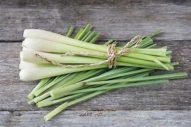
LEMONGRASS Essential Oil
Cymbopogon Flexuosus
Family: Poaceae are monocotyledonous flowering plants known as grasses.
The reason “why” I added Lemongrass Essential Oil into my Immune 8 blend was because of its anti-microbial (ability to destroy the virus, bacteria, and fungi). Read More

The topic of the paper will be the REAL pandemic of type 2 diabetes. However, a pandemic can be seen in diseases and famine, not just in viruses. Take starvation for example, which claims 15 individuals every minute. Twenty million starving in Somalia South Sudan, one million in Kenya, four Billion in the Horn of Africa, Nigeria, and Yemen. That’s a REAL pandemic. Cancer is another pandemic. Our world is full of global issues that claim lives.
Read More

The 2017-2018 flu season had registered high outbreaks from November to February, normal flu season. According to the CDC, the proportion of deaths was at or above the epidemic threshold. Everyone should be aware of how the virus spreads so fast. Also, contagiousness varies from flu season to flu strains as well as the period of attracting to symptomology. We are becoming so COVID-19 savvy nowadays at staying home, sanitizing, wearing masks, and social distancing.
There are many reasons why someone may become ill with the flu, most of the time they already have a compromised immune system. Virus strains mutate season to season. The immune system is designed to adapt to the organism’s environment, the evolution of the species which is known as herd immunity. There are many ways to stay healthy. I have included the Action Steps I take. Here are the top eight items that can help and a special notation at the end.

